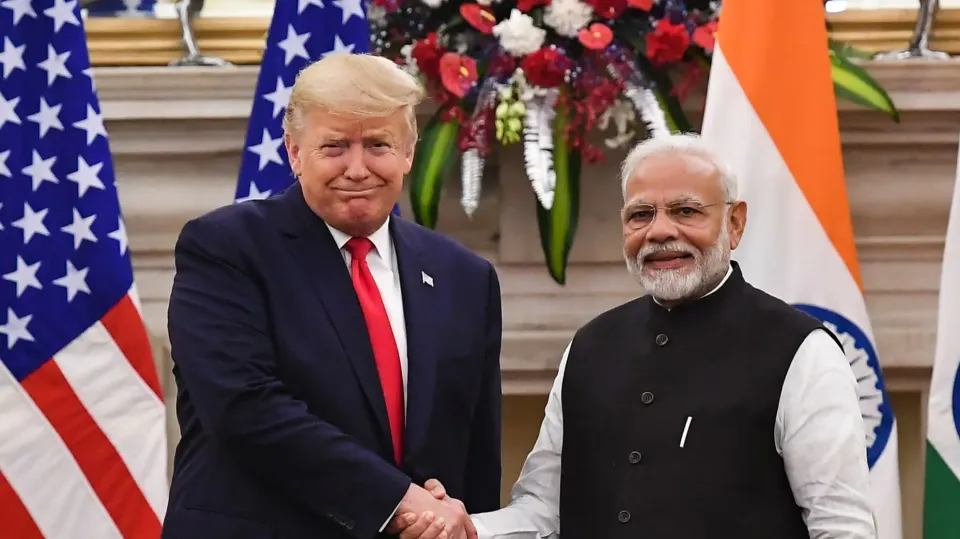India Prepares for Trade Challenges as Trump Returns to US Presidency
~ By Sujeet Rawat
Nov 6 2024, 02:01 PM

As Donald Trump returns to the White House, India braces for potential trade turbulence with the U.S. The former president’s America First agenda and stance on tariffs could impact India’s export sectors, from steel to pharmaceuticals. Industry leaders weigh in on possible retaliatory measures and the opportunities for India amid the U.S.'s shifting focus on China.
With Donald Trump's return to the U.S. presidency, India faces a potential resurgence of trade tensions that could reshape its economic ties with the United States. Known for his stringent trade policies and the America First agenda, Trump’s administration is expected to prioritize domestic industry by imposing protective tariffs that could affect key Indian exports.
Impact on Key Indian Sectors
During his previous term, Trump targeted several sectors with increased tariffs, particularly on steel and aluminium imports, which included products from India. Under his administration, tariffs as high as 25% on steel and 10% on aluminium were imposed in 2018, leading to a significant reduction in Indian exports of these materials. Experts anticipate a similar approach, which may include sectors like pharmaceuticals, textiles, and engineering goods. Such tariffs could potentially reduce India's export revenue, given that the U.S. remains India's largest trading partner, with annual trade exceeding $190 billion.
Ajay Srivastava, founder of the Global Trade Research Initiative (GTRI), suggests that India could face an increase in tariffs for various goods, which would impact the competitiveness of Indian products in the U.S. market. The increased cost on Indian goods, ranging from engineering products to textiles, may create a challenging environment for Indian exporters, especially as the U.S. market accounts for a significant portion of India’s foreign trade.
Retaliation and Strategic Response
If Trump’s administration enacts tariffs, India may consider reciprocal measures. Ajay Sahai, Director-General of the Federation of Indian Export Organisations (FIEO), highlights that India has the option to implement retaliatory tariffs, as it did in 2019 when the U.S. initially raised tariffs on steel and aluminium. Sahai notes that sectors previously affected, such as agricultural products, could again face restrictions in response to Trump’s policies.
India’s trade leaders underscore the importance of strategic responses to mitigate the impact on Indian exporters. For instance, any tariffs on pharmaceuticals or technology products could compel Indian companies to diversify their market presence, particularly in Asia and the European Union.
Opportunities Amidst the China Challenge
One potential advantage for India lies in the U.S.'s continued focus on reducing dependence on China. Under Trump's administration, the U.S. has maintained a “China plus one” policy, encouraging companies to seek alternative manufacturing hubs. This could favour India as global firms look for stable, business-friendly environments outside China.
Trump’s harsher stance on China may benefit India in multiple ways. Experts suggest that U.S. companies looking to diversify could increase investments in Indian sectors like technology and manufacturing, fueling growth in jobs and exports. Sriparna Pathak, Associate Professor at the Jindal School of International Affairs, points out that while India may face tariffs, Trump’s stance could result in preferential treatment for India over China in certain industries.
The Road Ahead for India-US Trade Relations
Under Trump’s leadership, U.S.-India trade relations may see fluctuations, particularly if new tariffs are enforced to reduce the trade deficit. India currently enjoys a favourable trade balance with the U.S., with a significant export presence in areas such as technology, textiles, and engineering goods. Trump’s administration has previously highlighted India’s high tariffs on select U.S. products, such as motorcycles, and is likely to push for more balanced terms.
Industry leaders urge the Indian government to strengthen its trade diplomacy, focusing on establishing agreements that benefit Indian exporters despite possible U.S. restrictions. Continued collaboration with American companies seeking to establish or expand operations in India could also help bolster economic resilience.
ALSO READ| Trump Presidency: What His Return Means for U.S.-Pakistan Relations
As India navigates these new trade dynamics, maintaining a flexible approach to tariffs and leveraging opportunities arising from U.S.-China tensions will be critical. Trump’s return brings both challenges and potential advantages, and India’s response could define its economic engagement with the U.S. in the coming years.
[Disclaimer: This article is based on information and opinions available at the time of writing and does not constitute financial or legal advice. Please consult professionals for specific guidance on trade policy impacts.]
Reference: MoneyControl
Recent Posts
Trending Topics
Top Categories
QUICK LINKS
Copyright © 2024 Arthalogy.com. All rights reserved.
